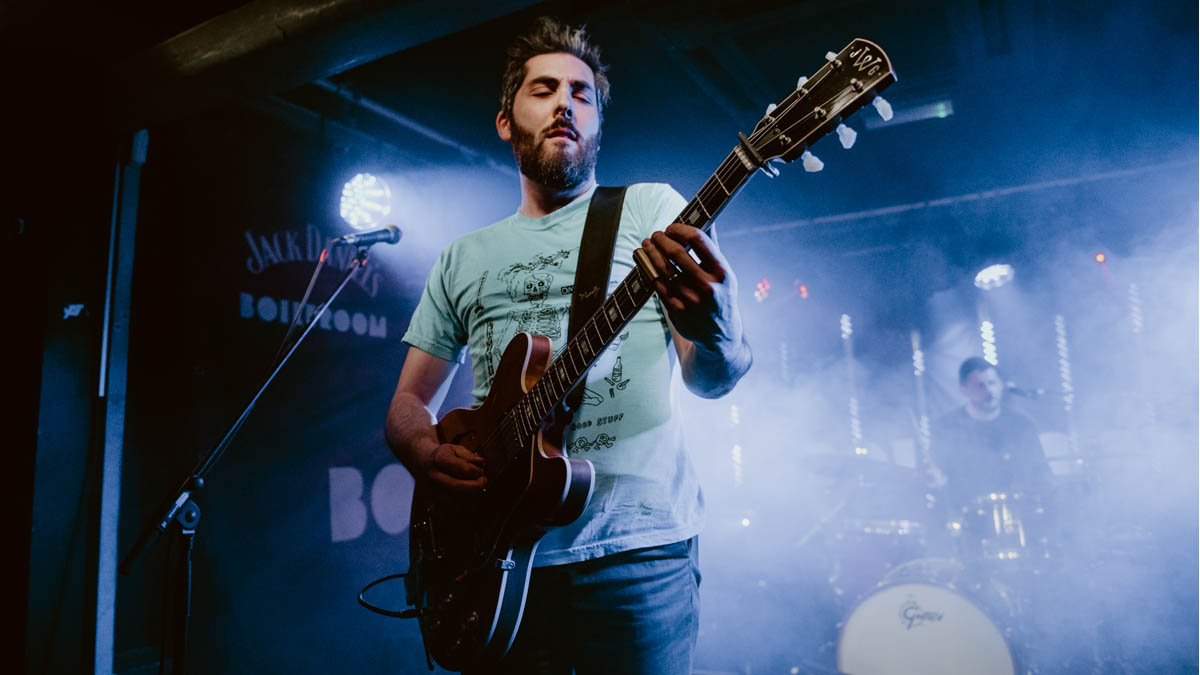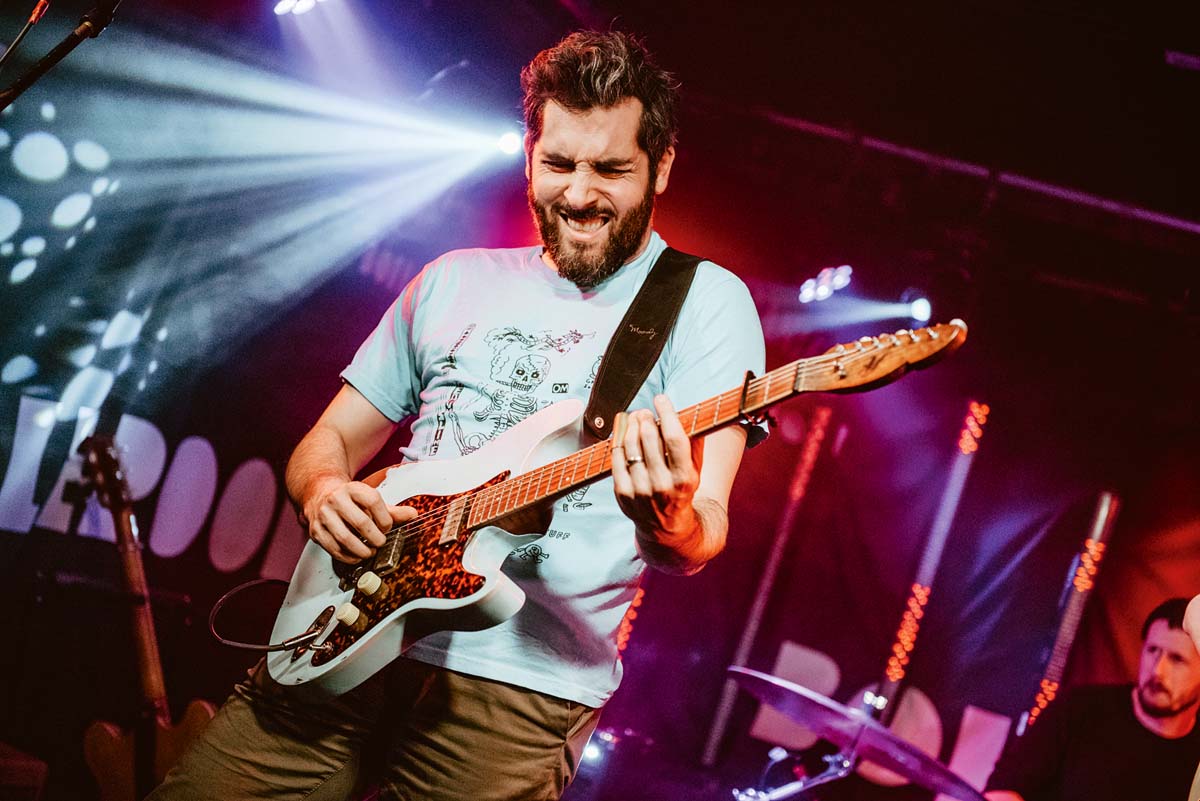Ariel Posen: “When it’s my record, I want to play and feel like I do when I’m playing live – that’s really important to me”
Slidemeister, tone guru, master songwriter and all-round dude Ariel Posen offers us the lowdown on his newly released album, Headway

“All my plans got rearranged, but I’m just making it work and I’m grateful that I can still be quite busy with music without playing gigs, and still keep productive and creative,” says Ariel Posen, speaking to us down the line from Montreal.
Quite naturally, our opening conversation with Ariel concerned the pandemic and the drought of touring and live gigs. But, like so many artists, the enforced lockdown hibernation and its associated restrictions have proved to be an inspiration for Ariel, in that it produced a new album, Headway, which appeared in stores and online during the first week of March.
As anyone will tell you, Ariel is not only a connoisseur of fine guitar tone, he’s also a canny songwriter – and, as it happens, the proud owner of a new Fender Jazzmaster, a guitar he never thought he would end up playing. We’ll let him tell you about that himself, but first, let’s get into the story behind the new record.
In terms of the material on Headway and what you wanted to achieve with it, does it form a continuous line of growth from the previous recordings?
“I always say that it takes you back to finding yourself as an artist and then each recording you do is like a little time-step, you know; it shows where you were at and then it helps you distinguish where you’re going.
“I wasn’t trying to reinvent myself. I was just doing what I was doing last time. It’s just I think I felt more comfortable, I just felt like I had taken off the training wheels. I was a lot more comfortable in my skin and I co-produced this record as well with the guy [Murray Pulver] that produced my last record. So I think I was just a lot more hands-on.
I was just doing what I was doing last time. It’s just I think I felt more comfortable, I just felt like I had taken off the training wheels. I was a lot more comfortable in my skin
“I was a lot more sure of what I was hearing and lot more sure of how I wanted things to go. But it wasn’t necessarily going in any different directions. Regardless, some of the sounds and the ways that I was hearing things might have evolved.”
Get The Pick Newsletter
All the latest guitar news, interviews, lessons, reviews, deals and more, direct to your inbox!
What gear did you use to create the palette of sounds on this record? And how does it relate to the creative aims that you were after?
“Again, I kept things mostly the same as the last record. I used my trusted Two-Rock Traditional Clean, which I used on probably 70 per cent of this record. The Two-Rock is on every single electric track except one song, where I’m running my resonator, so I have a microphone on that, and we were running that to a Victory as well.”
Were you using any compression on the guitar sound?
“The amp’s higher headroom actually let me control my dynamics completely. I don’t like compression; I want to have as much headroom and clarity as I can. Whenever I’m playing a guitar that’s tuned down lower, it’s a lot easier to start farting out and compressing. So the headroom helps just keep it stable and keep the air moving the same way and that is super important.
I totally agree there is a magic in, like, taking an old Gibson amp or a Princeton and turning it up and just beating the crap out of it
“Normally, people like to record with lower-wattage amps and I totally agree there is a magic in, like, taking an old Gibson amp or a Princeton and turning it up and just beating the crap out of it. There’s magic in that and I still do that.
“But for what I do when it’s my sound and my record, I want to play and feel like it does when I’m playing live, and that’s really important to me. It has to feel right, it has to feel big and I just need to control the dynamics. So much of what I do is using the volume knob on the guitar and leaving it around 5 to 7 and rarely am I actually full-blown open any of the time, and you get so many more sounds from that.”
It’s becoming quite a lost art to control your guitar sound that way.
“Yeah, people don’t realise. I know that everyone thinks if you have the volume up all the time then you’re getting all the sound from the capacitors, from the pickups and everything. And that may be true, but that might not always be the right sound – there are so many other elements.”

What about the guitars themselves that feature on the album?
“On this album I had just acquired a Custom Shop Fender Jazzmaster, made by Carlos Lopez. I hadn’t really spent time with Jazzmasters ever in my life, I just remember I’d pick one up at guitar stores and go, ‘It’s actually a cool thing, but I don’t really understand it.’
“But it was used so much on this record between the rhythm circuit and then the three pickup selections on the normal circuit. It was maybe one of the biggest varieties in sound I’ve ever experienced on a guitar. I wasn’t using it traditionally.
It’s always about serving the song, so just focus on your parts and try to make sure you’re not playing the same thing on every track. Variation is very important
“First of all, it’s a very bright guitar, in my experience. Not necessarily the rhythm circuit but the bridge pickup, the middle and the neck – it’s bright. But I have the guitar in open C [tuning], which is immediately a lot darker. It’s still open and there’s a lot of clarity and midrange, but the brightness becomes just more of a sparkle on the low-end, if that makes sense.
“It was a perfect balance of the best. I felt like they complemented each other perfectly to find this sonic region that fits in a mix majestically. For rhythm parts it was very chewy – you could chew on it and, like, sink your teeth into it.”
Can you share your best tip for getting a really great recording?
“Just be confident and be cosy in your own shoes and make whatever part or whatever it is you’re playing honest and genuine right out the gate. That’s always going to sound the best. And on the technical side, you always want to think ‘bigger picture’.
“It’s always about serving the song, so just focus on your parts and try to make sure you’re not playing the same thing on every track. Variation is very important. Sound is very important. But mix things up. Don’t do the same thing, just think about what you like about your favourite songs and try to get those sounds and get those parts and build a song so that it’s satisfying to listen to.”
- Ariel Posen's new album, Headway, is out now.
Jamie Dickson is Editor-in-Chief of Guitarist magazine, Britain's best-selling and longest-running monthly for guitar players. He started his career at the Daily Telegraph in London, where his first assignment was interviewing blue-eyed soul legend Robert Palmer, going on to become a full-time author on music, writing for benchmark references such as 1001 Albums You Must Hear Before You Die and Dorling Kindersley's How To Play Guitar Step By Step. He joined Guitarist in 2011 and since then it has been his privilege to interview everyone from B.B. King to St. Vincent for Guitarist's readers, while sharing insights into scores of historic guitars, from Rory Gallagher's '61 Strat to the first Martin D-28 ever made.
“I suppose I felt that I deserved it for the amount of seriousness that I’d put into it. My head was huge!” “Clapton is God” graffiti made him a guitar legend when he was barely 20 – he says he was far from uncomfortable with the adulation at the time
“I was in a frenzy about it being trapped and burnt up. I knew I'd never be able to replace it”: After being pulled from the wreckage of a car crash, John Sykes ran back to his burning vehicle to save his beloved '76 Les Paul













